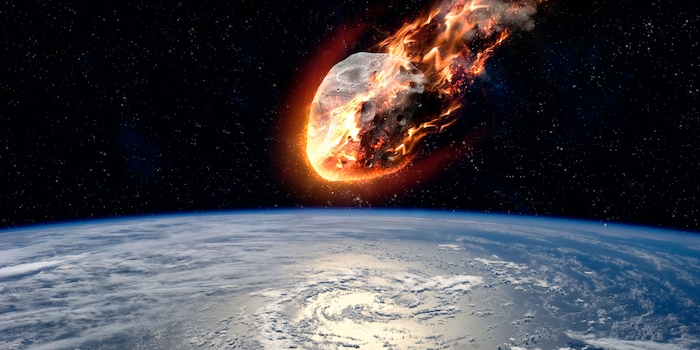
Probably the largest meteorite crater in the world
The trace of an unimaginable catastrophe is probably hidden in south-east Australia. The round structure is three times the size of the Chicxulub crater from the demise of the dinosaurs.
Deep beneath the surface of south-east Australia lies a strange structure. So far, it can only be recognised by magnetic anomalies, but what can be seen in the distorted field lines is remarkable: a system of concentric rings grouped around a hump in the centre. This indicates a meteorite crater. Such formations occur from time to time when a celestial body hits the earth. What is unusual, however, is the size of the ring structure, the centre of which lies beneath the town of Deniliquin: it measures at least 520 kilometres in diameter. This makes it far larger than any other known asteroid crater on Earth.
The largest known impact crater on Earth to date is the Vredefort structure, which had a diameter of up to 300 kilometres when it was formed more than two billion years ago. In 2006, experts discovered a crater measuring almost 480 kilometres under the ice of the Antarctic - however, it has not yet been proven that this is really the trace of an impact. The Deniliquin crater would be significantly larger. However, it is by no means certain that it is actually a truly gigantic impact - and not just a random circular freak of nature.
When an asteroid several kilometres in size hits the Earth, it vaporises huge amounts of rock and creates a bowl-shaped depression in the Earth's crust. While shock waves and ejected material spread outwards from the point of impact, the rock in the centre of the crater behaves for a short time more like water into which a stone has been thrown: It bounces back upwards while concentric waves spread through the new crater. At the same time, the unstable crater walls sink inwards and partially fill the resulting hole. This forms the ring structures and the central mountain typical of such large craters.
However, none of this is visible in Deniliquin; it is all buried under layers of rock around four kilometres thick. Towering mountains, erupting volcanoes, wind and water have covered and eroded its shape. However, several pieces of evidence, compiled in a publication by Andrew Glikson from the University of New South Wales and geologist Tony Yeates, support the assumption that this is indeed the largest crater discovered on the planet to date. In addition to the telltale magnetic rings, which experts pointed out as early as 2000, measurements in 2009 revealed circular gravity patterns. In 2015, a bulge was also discovered in the Earth's mantle, which bulges upwards under the suspected crater - it was possibly formed when dozens of kilometres of rock vaporised and the Earth's mantle bulged upwards due to the missing weight.
Amazingly, it is even known to some extent exactly when the Deniliquin structure formed. To the west of it, it protrudes into a mountain belt that formed around 514 million years ago, while granites that are around 420 million years old cut through the crater and are therefore younger. It was precisely during this period that the second largest mass extinction in Earth's history occurred, in which around 85 per cent of all animal species perished - In an interview with the magazine "The Conversation", Glikson surmises that the gigantic impact could have triggered the catastrophe. However, it must first be proven with certainty that it really was an impact crater. For this, experts require direct evidence of the impact in the form of rocks altered by shock waves and enormous heat. Future deep drilling should provide this evidence.
Spectrum of science
We are partners of Spektrum der Wissenschaft and want to make well-founded information more accessible to you. Follow Spektrum der Wissenschaft if you like the articles.
[[small:]]
Cover image: Shutterstock / Vadim Sadovski
Experts from science and research report on the latest findings in their fields – competent, authentic and comprehensible.